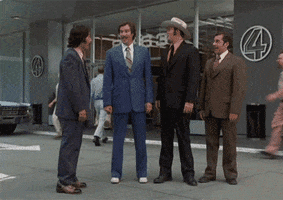2017 Fantasy Baseball draft strategy: Is Trea Turner for real? – CBSSports.com
To answer the question “is Trea Turner for real?” we must agree on what exactly that means.
Turner really was the No. 1 hitter in Head-to-Head points per game last year, and he really did ride an absurd .388 BABIP to an even more absurd .342 batting average.
But I really doubt either of those happens again. Too many other great hitters out there. Too unlikely that a player is that good that fast.
His going rate presumes as much, though. He isn’t pushing Mike Trout for the top spot on draft boards but is getting picked somewhere in the middle of the second round. Still, for a 23-year-old with only 100 major-league games under his belt, that’s a pretty big leap.

And I can’t account for everyone’s sensibilities. Obviously, some of us are more risk-averse than others and some more reward-driven than others. But I’m here to give you the same confidence I have that Turner will live up to his price tag and then some.
That’s not to say caution is unwarranted. Time and time again, we’ve seen the splashy rookie fizzle out as a sophomore, so if only on principle, you shouldn’t expect the same numbers he put up last year. But dropping him to the second round already bakes in so much regression that, in a world where such a player exists, I might go so far as to call him bust-proof.
Nobody can sustain a .388 BABIP, true, which means you can’t reasonably expect Turner to sustain a .342 batting average. But there is such a thing as a high-BABIP hitter, and judging by Turner’s line-drive rate, up-the-middle approach and plain old speed, he profiles as one. Just going by the first of those measurements — the line-drive rate — the 10 qualifying hitters who were within a point of Turner’s 25.2 percent mark last year averaged a .334 BABIP, much higher than the league average of about .300.
Then add the fact that Turner ranked in the upper half of the league in putting the ball in play, his 18.2 percent strikeout rate sandwiched between Joey Votto‘s and Jonathan Lucroy‘s — an uncommon characteristic for a player his age — and the downside comes out to something like a .290 average. He will help you in batting average, in other words, and his minor-league track record fully supports that idea.
A source of even greater skepticism, though, is the power he showed in his first extended run, homering at a rate that would translate to about 25 over a full season, with a .225 ISO that was 60 points higher than any he put up in the minors. But look at the scouting report Baseball America had for him last spring:
“He has surprising pop thanks to the bat speed he’s able to produce, and he could consistently hit double-digit home runs.”
Power was supposed to be part of his game. It came more abruptly than might seem normal, but there’s a long history of high-pedigree prospects suddenly upping their power production in the majors, from Francisco Lindor to Andrew McCutchen to Mike Trout himself.
The distance on Turner’s home runs would suggest they were nothing fluky. His home run-to-fly ball ratio was nothing outlandish. I’m thinking he’ll help you in home runs, perhaps even eclipsing 20.
Stolen bases? That’s the easy one. He delivered one every 2.2 games last year, and with a 84.6 percent success rate, he won’t be getting the red light from Dusty Baker any time soon. He stole bases by the bushel in the minors as well, so it’s probably his most reliable attribute. And it just so happens to be the scarcest in Fantasy today.
What’s a safe projection for Turner? Forty? OK, but wouldn’t you agree 60 is a possibility? He performed at a near 70-steal pace after reaching the majors last year. Either way, it’s fair to say he will help you in stolen bases, guaranteed.
Even if I’m wrong and he’s merely average in one of those three areas, the bottom line is that the Turner we saw last year and the Turner scouts always expected to see in the majors excels in so many areas that he can fall flat in one and still live up to the early price tag. If he’s short on home runs, he’s Starling Marte. If he’s short on batting average, he’s Jonathan Villar. If he’s somehow short on stolen bases, he’s Francisco Lindor.
Except unlike those players, he’s not doing it at one position or even two. He’s doing it as an outfielder, he’s doing it as a second baseman, and come the second week of the season, he’s doing it as a bona fide shortstop in CBS Sports leagues.

And I’m still betting he falls short in none of those areas, which would make him a top-five player in Fantasy, contributing in some of the thinnest categories at some of the thinnest positions. He was the best rookie hitter we’ve seen since Mike Trout, and I think it’s distinctly possible he gives the gold standard a run for his money.




